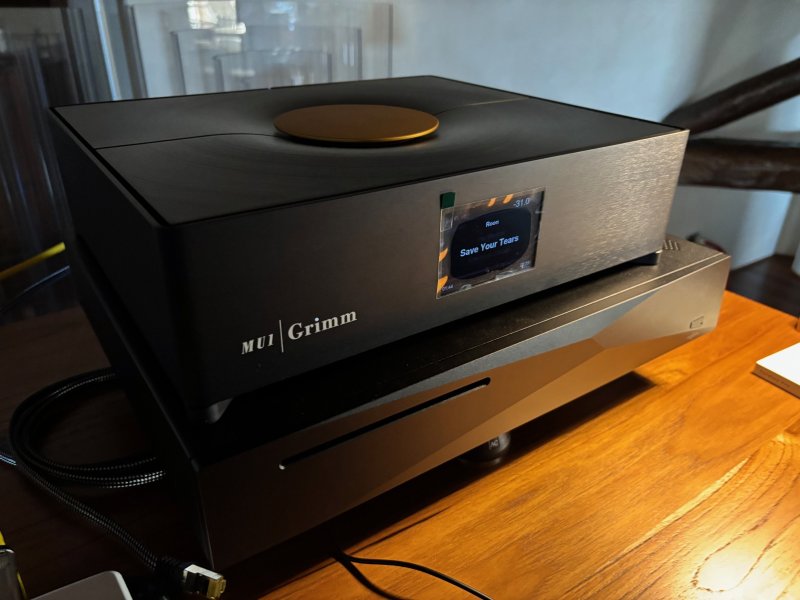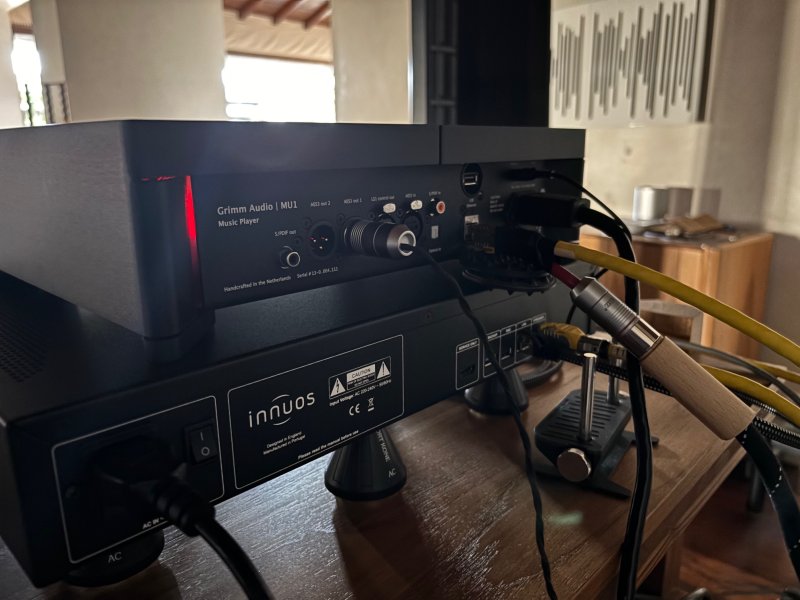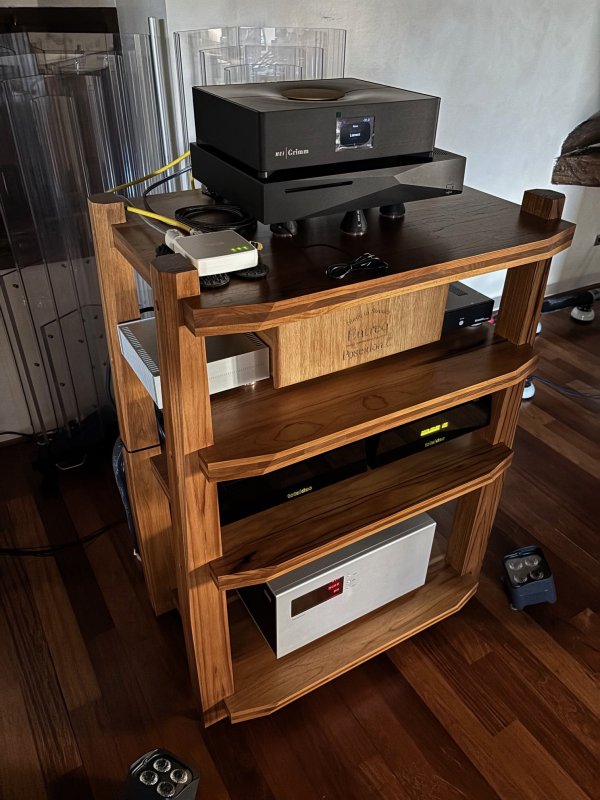As the title says, I'm another user extremely satisfied with his GRIMM Audio GU1. I have been reading for months: technical specifications, feedback, reviews..etc. A series of factors led me to choose the Grimm over for the Taiko Extreme, Antipodes K50 or Pink Faun 2.16 Ultra.
Not having the chance to listen to each of them, I tried to analyze technical factors that would lead me to make a decision.
starting from the assumption that my TotalDac D1 Six has the best performance using the AES//EBU port as digital input, my previous setup was: Innuos ZENith Mk3 as streamer and the Bricasti M5 as Ethernet to AES/EBU converter.
What I liked when reading the technical characteristics of the GRIMM was:
The result in my system was beyond what I could expect after reading the specs.
The sound is even more natural, open, full-bodied, with plenty of air between the instruments which causes an increase in detail and associated harmonics, the depth is maintained even when raising the volume, the voices never get close to the listener but remain firm and solid in the center and at the top of the soundstage.
I don't know if the other competitors sound better or worse, I know that I'm extremely satisfied with the result obtained by introducing the Grimm MU1 into my system.



Not having the chance to listen to each of them, I tried to analyze technical factors that would lead me to make a decision.
starting from the assumption that my TotalDac D1 Six has the best performance using the AES//EBU port as digital input, my previous setup was: Innuos ZENith Mk3 as streamer and the Bricasti M5 as Ethernet to AES/EBU converter.
What I liked when reading the technical characteristics of the GRIMM was:
- It uses Linux that Grimm’s staff customized for the scope (instead of Windows used by Taiko Extreme for instance) and Roon which they also have customized,
- It has AES/EBU as standard output,
- It use a twin-PCB switching power supply (if well designed, less noise and fast response),
- The engineers have focused the project on ultra low clock jitter, since the digital output is based on AES/EBU and therefore encoding the clock and the data together,
- They also developed custom-designed FPGA interface board, which is the true core of the project where the “magic happens” (quote from several users). Here you can decide to up-sample the incoming rate by 2 or 4, and/or use its volume control,
- It also has the possibility of associating an infrared remote control, which I find to be a practical and intelligent solution.
The result in my system was beyond what I could expect after reading the specs.
The sound is even more natural, open, full-bodied, with plenty of air between the instruments which causes an increase in detail and associated harmonics, the depth is maintained even when raising the volume, the voices never get close to the listener but remain firm and solid in the center and at the top of the soundstage.
I don't know if the other competitors sound better or worse, I know that I'm extremely satisfied with the result obtained by introducing the Grimm MU1 into my system.
















